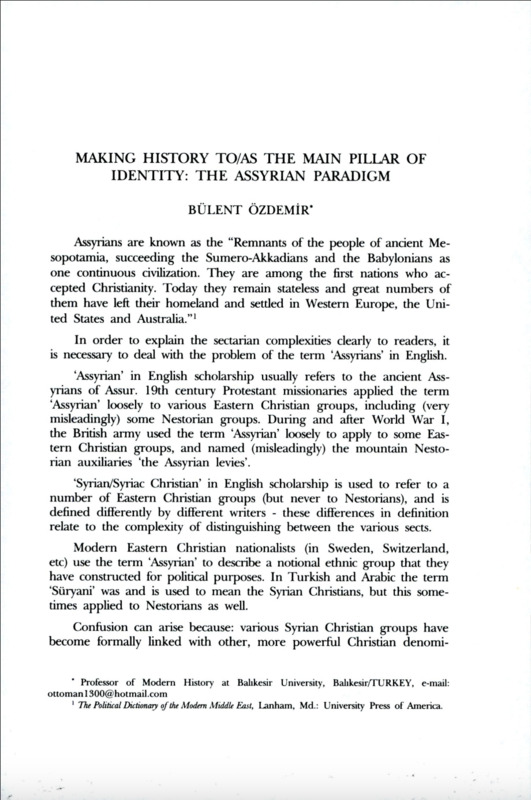Making History to/as the Main Pillar of Identity: The Assyrian Paradigm
- Title
-
Making History to/as the Main Pillar of Identity: The Assyrian Paradigm
- Creator
- Bulent Özdemir
- Date
- 2012
- Description
- In Making History To/As the Main Pillar of Identity: The Assyrian Paradigm, Bülent Özdemir explains that the English term “Assyrian” has shifted meaning over time and across institutions, creating persistent confusion. In academic English it often points to the ancient Assyrians of Assur, but nineteenth-century Protestant missionaries began applying it loosely to a range of Eastern Christian communities, including—misleadingly—some labeled “Nestorian.” During and after World War I the British army continued this loose usage, even naming mountain Nestorian auxiliaries the “Assyrian Levies.” Meanwhile, “Syrian/Syriac Christian” in English can cover several Eastern churches (usually not the so-called Nestorians) and is defined inconsistently by different writers; in Turkish and Arabic, Süryani denotes Syrian Christians and is sometimes extended to Nestorians. Özdemir also notes that some modern Eastern Christian nationalists use “Assyrian” as a notional ethnonym for political purposes.
- Language
- English
- Publisher
- Making History to/as the Main Pillar of Identity: The Assyrian Paradigm, Araştırma Makaleleri, p. preface.
- dergipark.org.tr
- Subject
- Identity
- Item sets
- assyrians


